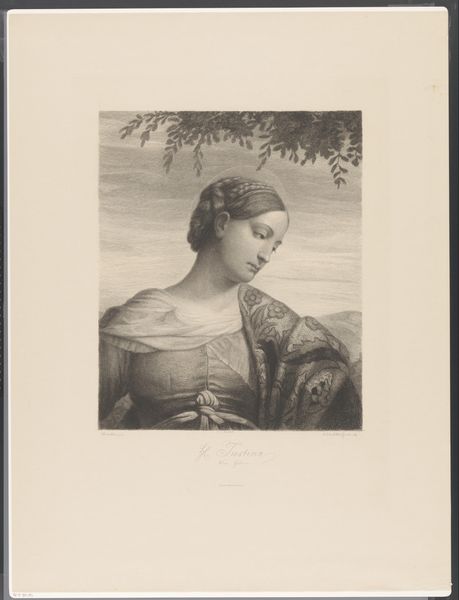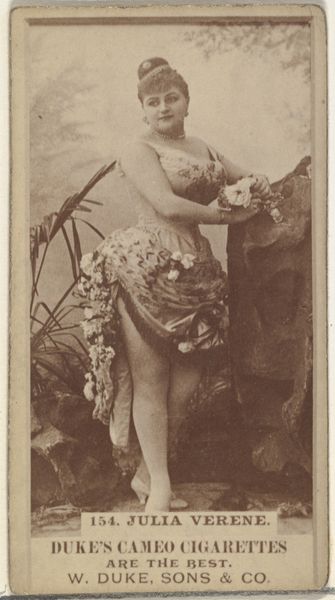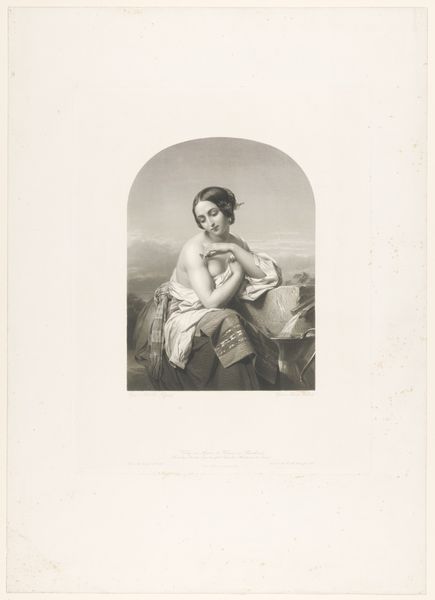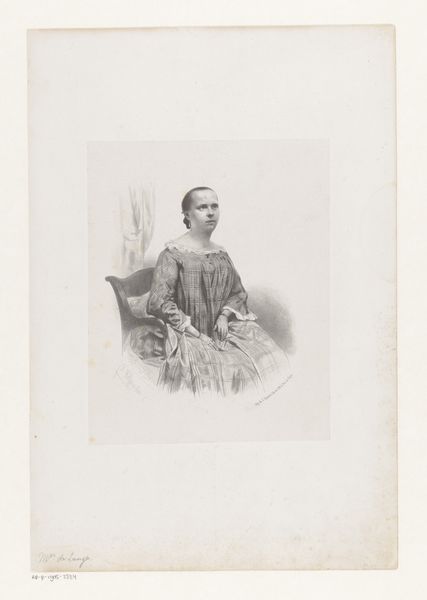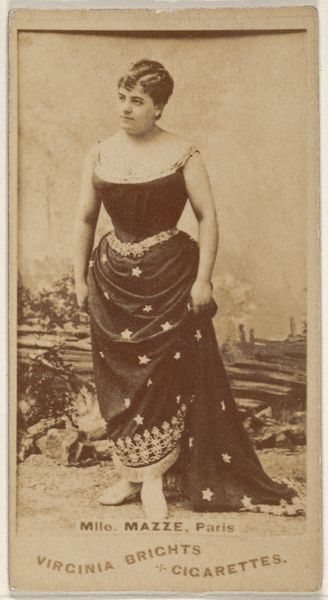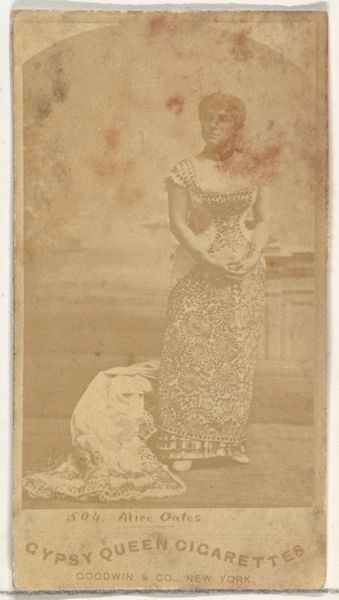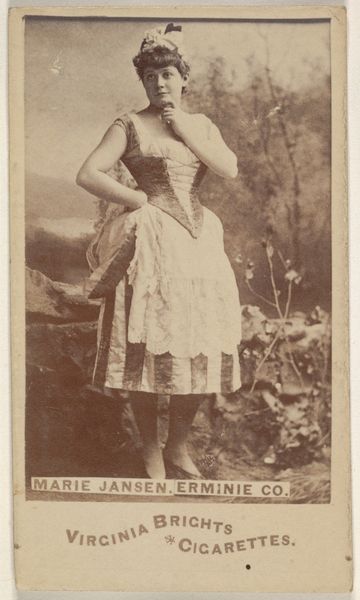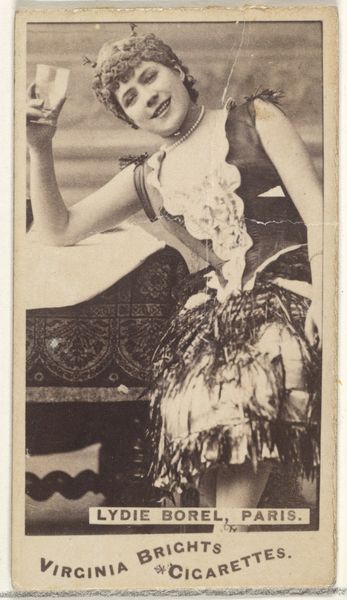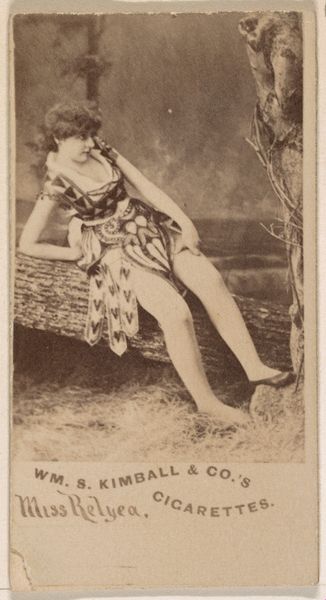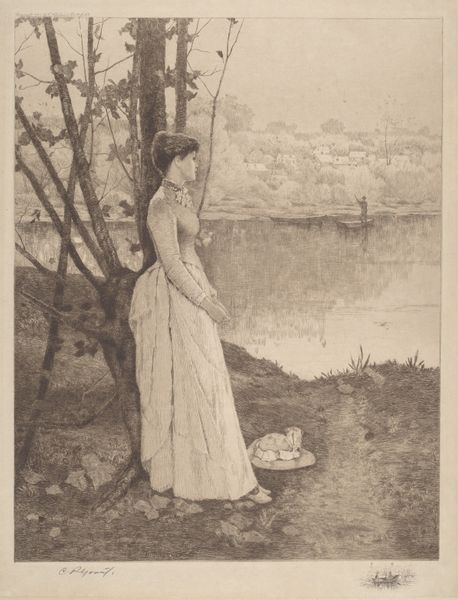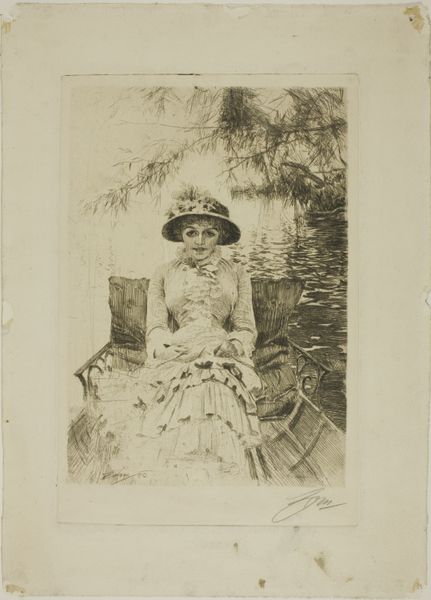
photography, gelatin-silver-print
#
portrait
#
print photography
#
photography
#
orientalism
#
gelatin-silver-print
Dimensions: height 220 mm, width 160 mm
Copyright: Rijks Museum: Open Domain
Editor: This is "Studioportret van een zittende jonge Javaanse vrouw" or "Studio Portrait of a Seated Young Javanese Woman" by Kassian Céphas, a gelatin silver print, dating from around 1890 to 1910. There's a thoughtful mood to it. She almost seems to be staged in this manufactured natural environment, and I wonder about the story behind this portrait. How do you interpret this work? Curator: Well, the image, created by a Javanese photographer, operates within a complicated history. While Céphas was Javanese, the artistic styles and the very act of portraiture in this manner were heavily influenced by European traditions and, frankly, colonial power structures. It's difficult to divorce this image from the context of orientalism and the exoticization of Javanese culture for Western consumption. Notice how her traditional clothing and the stylized background create a staged, almost theatrical feel. Editor: So, it's less about genuine representation and more about constructing an image that catered to a specific, likely Western, gaze? Curator: Precisely. Think about the role photography played during this period. It was a tool used to document, categorize, and ultimately, control colonized populations. This photograph, beautiful as it is, likely participated in this system by presenting a romanticized and marketable version of Javanese identity. We have to consider who the intended audience was, and what expectations they brought to the image. Who do you imagine were viewing the piece at the time? Editor: It makes you wonder about the young woman herself – her agency in the process, and how she felt being portrayed in this way. I definitely see the tension between appreciating its beauty and acknowledging its historical implications now. Curator: And that tension is key. We shouldn't dismiss the artistry or individual expression, but we also can't ignore the broader power dynamics at play. By understanding this historical context, we can gain a richer and more critical perspective. Editor: I’ll never look at historical photographs the same way. Thank you.
Comments
No comments
Be the first to comment and join the conversation on the ultimate creative platform.
